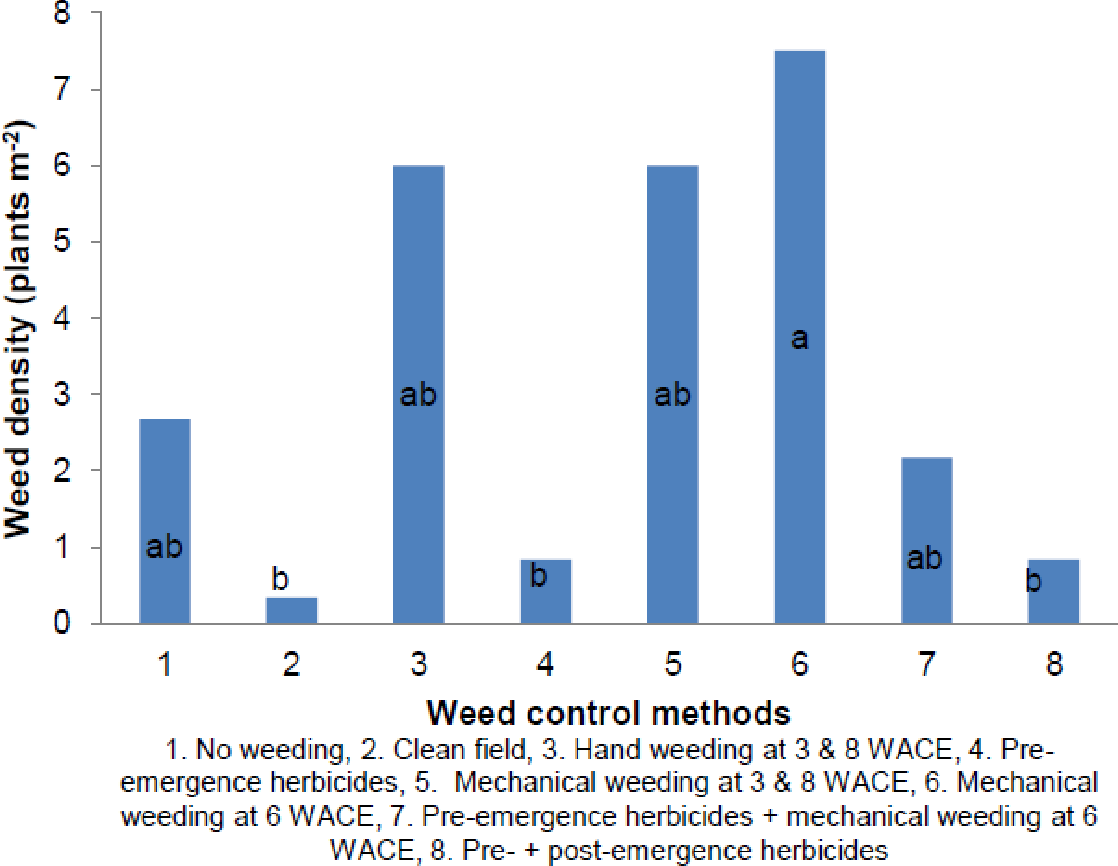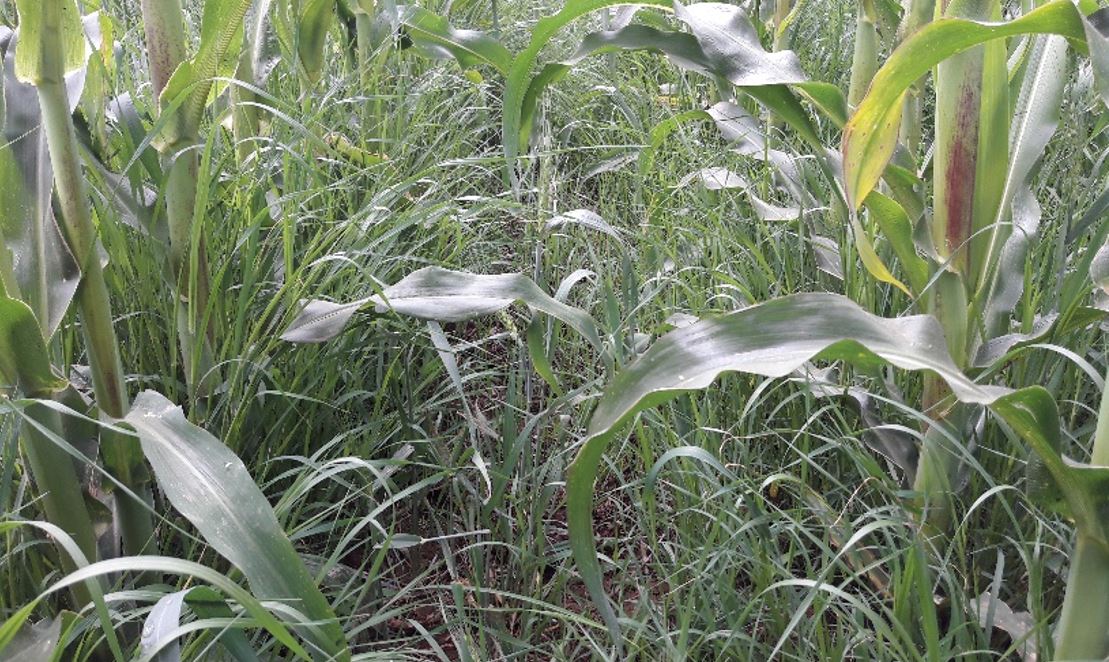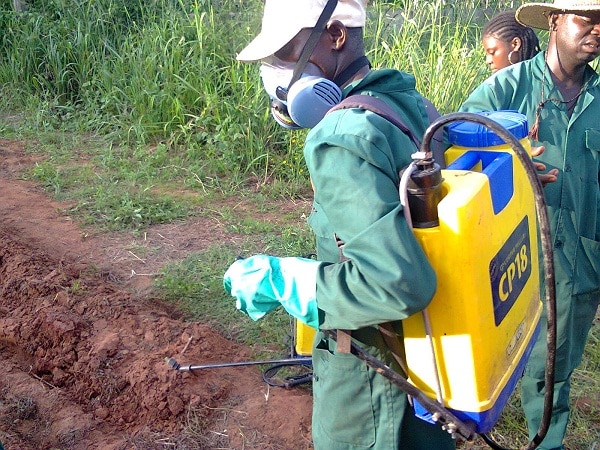Pre-emergence herbicides for maize crops
Summary
The level of weed encroachment in farmlands across Sub-Saharan Africa is generally high and causes vast amounts of water and nutrients in soils to be drawn away from food crops, which reduces grain yields and returns on agro-input investments. It is critical to keep a low number of common weeds in maize crops, especially during its germination and initial growth stages, up to 10 weeks after planting. Without proper control of weed encroachment during the first five weeks of the season the potential grain yield of maize crops is brought down by 50% on average, and if no measures are taken by farmers the yield losses are ranging from 57 to 80%. Removing weeds that have sprouted by hand or machine is labor-intensive and expensive as it has to be repeated 2-3 times for effectively reducing weed encroachment and increasing maize grain yields, this because agitation of soils by shallow hoeing and harrowing promotes other weeds to germinate. Pre-emergence herbicides that prevent weeds from developing roots after seed budding make it possible to keep farmlands free of weeds during the critical stages of early crop development, and minimizes weed encroachment later in the growing season. This kind of herbicides is applied shortly before or at the time of planting maize after the soil has been tilled which keeps weed seedlings from coming up and has proven to render major increases of grain productivity, fertilizer efficiency and resilience to drought.
About the Solution
Maize is most sensitive to weed encroachment between the stage of emergence up to the time when six leaves are unfurled during which period the root system of the staple crop is being developed and its shoots may get outcompeted by fast-growing weeds. Pre-emergence herbicides give crops a head start by eliminating competition for light, nutrients and moisture when it is most vulnerable during its early growth stage, and thereby accelerate the development of roots and shoots. Major advantages are offered by use of pre-emergence herbicides in comparison to other weed control strategies such as manual and mechanical removal or chemical-assisted killing of weeds that have sprouted. For one, the solution virtually eliminates seed dispersal from weeds that gives rise to long-term reductions in encroachment, and recurrent savings in herbicide use and labor; this because one year of seed dispersal by weeds requires seven years of removal or chemical control. In maize cropping systems with a high degree of weed encroachment there is need for multiple herbicide applications throughout the growing season, and in such cases the early-stage control that is achieved through the pre-emergence approach has shown to increase the effectiveness of post-emergence herbicides. Also, preventing weeds from damaging maize in the initial growth stages alleviates the time pressure on further pest control measures during the season, which are required in many African farming systems.
The application of pre-emergence herbicides is suitable for weed management in all maize growing areas of Sub-Saharan Africa, especially in farmer communities where availability of labor for manual removal is limited. Studies across the continent have shown that application of pre-emergence herbicides is effective on farmer fields with high to low levels of weed encroachment under humid to semi-arid climates, creating short and long term benefits under these varying conditions. The sort of weeds in farmlands, seasonal weather patterns and timing of other management practices are dictating the exact formulation of chemical agents and moment of application that is necessary for pre-emergence weed killing. Use of the chemical control technology has to be combined with the appropriate input of inorganic fertilizers and organic resources to farmlands for the intervention to increase grain production and food security, especially on degraded fields with low soil fertility status. Pre-emergence weed control strategies have proven to be more effective than post-emergence approaches which are most often used by farmers in Sub-Saharan Africa, thus providing a direct entry point for improving agriculture.
Agro-input companies in Sub-Saharan Africa market a range of pre-emergence herbicides that contain different chemical agents and are designed for eradicating specific kinds of weeds occurring in maize crops. Herbicides for broadleaf weeds such as Blackjack, Thorn Apple, Oxalis and Spiderwort are usually made of atrazine, phenoxy (MCPA) or terbutryn compounds, whereas for grass weeds like Bermuda grass, Guinea Fowl grass, Star grass, Wild oats and Nutsedge the most common herbicides are made of metolachlor, acetochlor or alachlor compounds. Further to this, adjuvants are added to pre-made formulations or spray tanks for enhancing herbicidal activity or application characteristics, such as better mixing and handling, greater droplet coverage, spray retention and droplet drying, improved herbicide cuticle penetration and cellular accumulation which minimize leaching of the chemical agents through the soil profile. Depending on the prevalent sorts of weed and type of maize cultivation, i.e., monocrop, rotation or intercrop, the formulation of pre-emergence herbicide needs to be adjusted.
Concentrated solutions of pre-mixed or single herbicides are diluted in water to activate the chemical agents following the prescribed ratio and safety precautions. This is then applied to farmer fields using a backpack systems with one or two spraying nozzles or tractor-mounted systems with many spraying nozzles, which is substantially benefiting herbicide placement, effectiveness of weed control and labour requirements for application to croplands. Protective clothing should be worn by workers that apply the herbicides to avoid contact with chemical agents. Soils should be moist, not too wet or too dry, when fields are sprayed thus requiring the time of application to be synchronized with rainfall, being carried out one week after tillage of croplands and latest before maize is 10 cm tall. Chemical weed control management technologies should be prioritized on fields with the highest level of weed encroachment and most difficult to control weeds to maximize yield and income gain, allowing to steadily build down infestations on farms.
Commercialization
Commercially available
Solution Images
Institutions

Accompanying Solutions
Drought tolerant varieties (DTMA, WEMA, others), Golden maize varieties (High provitamin A), Specialized pre-plant fertilizer blending and N topdressing, Maize-legume rotation and intercropping, Fall armyworm control in maize production (e.g. FORTENZATM Duo)



